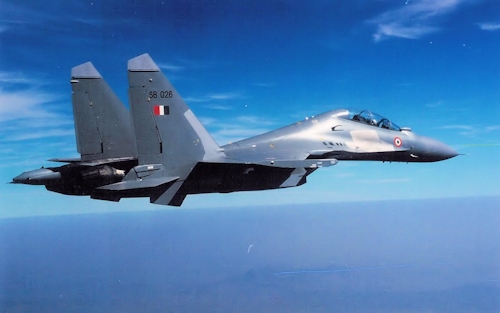The aftermath of New Delhi's decision to proceed with the purchase of large quantities of armaments (in particular S-400 anti-aircraft missiles) from Russia continues despite the threat of sanctions by the United States in the context of the now famous CAATSA. To a specific question from the reporters, during the meeting with the press held in the White House the 10 in October, on how the United States would respond to the Indian initiative, the American president Donald Trump had thus replied: "India will find out soon. Before you imagine". The American answer has finally arrived, but in a more subtle way than we would have imagined, knowing the fiery and unpredictable temperament of the White House tenant. Taking advantage of New Delhi's relaunch of the program for the purchase of a new tactical fighter by the Indian Air Forces, Washington has basically proposed to trade the "non-application" of the sanctions regime with the selection by India of the famous American fighter General Dynamics F-16 Fighting Falcon.
The program to which Washington refers is the infamous MMRCA (Medium Multi-Role Combat Aircraft) now, in the purest spirit of the Hindu tradition, to its fourth "reincarnation" and during which the F-16, in its variant updated F-16IN (based on the "Block 70 / 72" version enhanced to meet Indian needs), has already been rejected twice in favor of the French Dassault Flurry. However, due to insurmountable problems of a political and industrial nature, the French fighter has been ordered to date only in 36 specimens, while the Indian Air Force has issued a requirement for 200-300 aircraft with which to equip 11 frontline squadrons giving to the whole program a total value of 13-15 billions of dollars. With such a "bonanza" up for grabs it was obvious that the White House would mobilize all its "fire potential" in order to tip the scales on the part of the domestic military-industrial complex, even coming to propose to New Delhi the "Co-production", winking at Prime Minister Narendra Modi's "Make India" program with the aim of increasing the percentage of industrial components produced in India in all sectors, including aeronautics.
 Of course, an agreement of this kind (technically "from government to government") would be economically advantageous for India if not for the fact that it would inextricably link the two countries at a historic moment in which, on the contrary, the Asian giant is trying to get out of its second-rate geopolitical position in order to claim a place at the table of the "big ones" in complete independence. This is why the Indians have proven themselves historically more likely to turn to Moscow for the main supplies of imported weapons, Russia being the only one of the great planetary powers not to have particular strategic interests in the Indian Ocean, right where New Delhi wants to exercise a position of indisputable dominance along a path that, most likely, will eventually lead to a head-on collision with both Washington and Beijing.
Of course, an agreement of this kind (technically "from government to government") would be economically advantageous for India if not for the fact that it would inextricably link the two countries at a historic moment in which, on the contrary, the Asian giant is trying to get out of its second-rate geopolitical position in order to claim a place at the table of the "big ones" in complete independence. This is why the Indians have proven themselves historically more likely to turn to Moscow for the main supplies of imported weapons, Russia being the only one of the great planetary powers not to have particular strategic interests in the Indian Ocean, right where New Delhi wants to exercise a position of indisputable dominance along a path that, most likely, will eventually lead to a head-on collision with both Washington and Beijing.
To date, it is not known what formal response came to the American authorities, but a few days after the "revival" of Trump, the Indian Strategic Forces Command has tested an "Agni I" ballistic missile able to be armed, between the others, even with nuclear warheads. It is evident that, apart from economic convenience, India is determined to remain an autocephalous geopolitical entity characterized by an independent and non-aligned foreign policy.
(photo: web / Indian Air Force)












